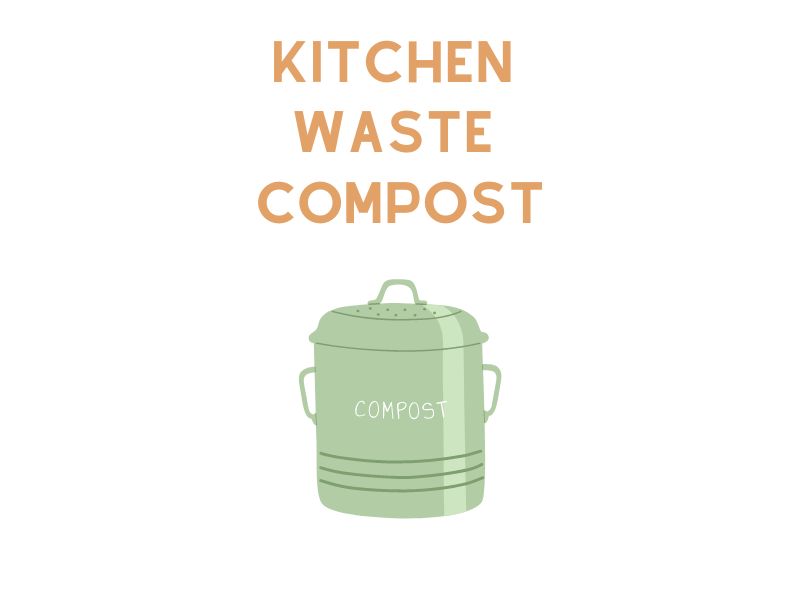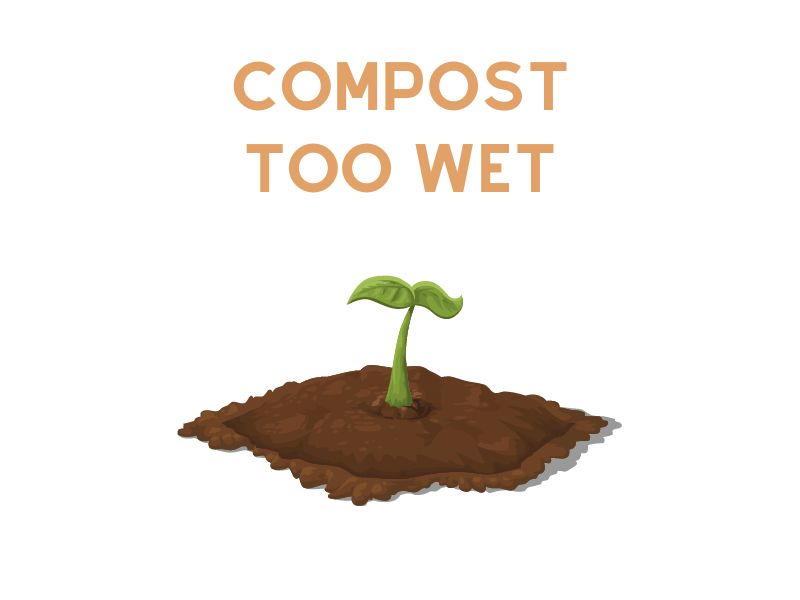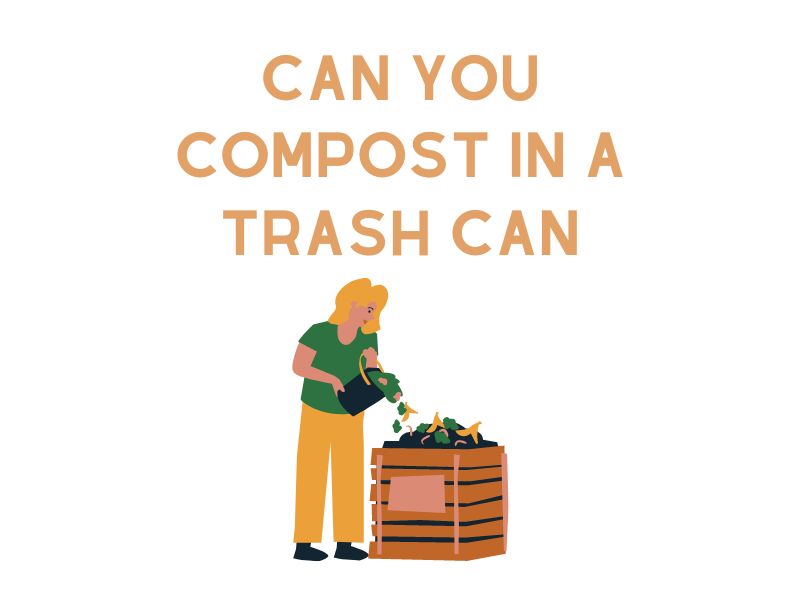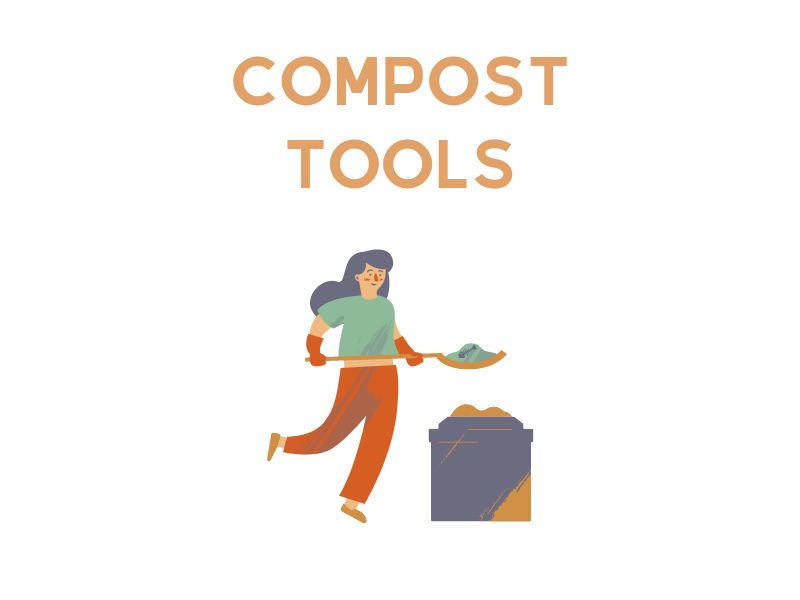Composting is a natural process that involves breaking down organic waste into a nutrient-rich soil amendment. By composting kitchen waste, you can reduce the amount of waste you send to the landfill and create a valuable resource for your garden.
Here’s some more information about the benefits of composting kitchen waste:
Environmental sustainability: Composting kitchen waste reduces the amount of organic waste that goes to landfill, where it can produce harmful greenhouse gases such as methane. Instead, composting allows the organic matter to decompose aerobically, producing nutrient-rich soil amendments that can be used to grow healthy plants.
Benefits of using kitchen waste for composting: Using kitchen waste for composting is an easy way to reduce your environmental impact and create a valuable resource for your garden. Kitchen waste is high in nitrogen, which is an essential nutrient for plant growth. By composting kitchen waste, you can create a nutrient-rich soil amendment that will improve the health and productivity of your garden.
Materials Needed for Composting Kitchen Waste
To compost the kitchen waste, you will need the following materials:
Compost bin or pile: You can compost kitchen waste in a variety of containers, including a dedicated compost bin, a pile in your backyard, or even a worm bin if you want to compost indoors.
Carbon-rich materials: Carbon-rich materials such as dry leaves, shredded newspaper, and cardboard provide the energy source for the microorganisms that break down kitchen waste.
Nitrogen-rich materials: Nitrogen-rich materials such as kitchen waste, grass clippings, and coffee grounds provide essential nutrients for the microorganisms that break down carbon-rich materials.
Garden tools: You’ll need a few basic garden tools such as a pitchfork, shovel, and gloves to manage your compost pile.
Types of Kitchen Waste Suitable for Composting
Most fruit and vegetable scraps are suitable for composting, as well as coffee grounds and filters, tea bags, crushed eggshells, bread and grains, and nut shells. However, it’s important to avoid composting meat, dairy, oils, and bones, as they can attract pests and slow down the composting process. Here’s a more detailed list of what to compost and what to avoid:
What to compost:
- Fruit and vegetable scraps (including peels, cores, and seeds)
- Coffee grounds and filters
- Tea bags (remove any staples or tags)
- Crushed eggshells
- Bread and grains
- Nutshells (except for walnut shells, which contain a chemical that can inhibit plant growth)
What to avoid:
- Meat, fish, and bones
- Dairy products
- Oils and fats
- Pet waste
- Diseased or insect-infested plants
Steps to Create Compost From Kitchen Waste
To make compost from kitchen waste, follow these steps:
Setting up the compost bin or pile: Choose a location for your compost bin or pile that is well-drained and receives partial sun. Add a layer of carbon-rich materials to the bottom of the bin or pile.
Balancing carbon-to-nitrogen ratio: The ideal carbon-to-nitrogen ratio for composting is 30:1. You can achieve this by adding roughly equal amounts of carbon-rich and nitrogen-rich materials.
Layering kitchen waste and carbon-rich materials: Add a layer of kitchen waste to the compost bin or pile, followed by a layer of carbon-rich materials. Continue layering until you’ve used up all of your kitchen waste.
Maintaining moisture and aeration: Keep your compost moist (but not too wet) and aerated to ensure proper decomposition. Use a hose or watering can to moisture levels are consistent, and turn the compost regularly with a pitchfork or shovel to aerate it.
Turning the compost regularly: To speed up the composting process and ensure even decomposition, turn the compost pile every few weeks using a pitchfork or shovel. This will help to mix kitchen waste with carbon-rich materials and promote aeration.
Recognizing when compost is ready for use: When your compost has turned into dark, crumbly soil that smells earthy, it’s ready to use in your garden. This can take anywhere from a few months to a year, depending on the size of your compost pile and the conditions in your composting environment.
Troubleshooting Common Composting Issues
Here are some common issues that you may encounter when composting kitchen waste, and tips for resolving them:
Compost pile smells bad: If your compost pile smells bad, it may be too wet or have too much nitrogen. Add more carbon-rich materials and turn the compost more frequently to increase aeration.
Compost is not breaking down: If your compost pile is not breaking down, it may be too dry or have too much carbon. Add more nitrogen-rich materials and water the compost pile to increase moisture levels.
Compost pile attracts pests: If your compost pile attracts pests such as rodents or flies, it may be because you’re composting meat, dairy, or oils. Avoid composting these materials and cover your compost pile with a tarp or other cover to deter pests.
Tips for resolving issues: If you’re experiencing issues with your compost pile, remember to be patient and continue to add the right balance of materials. Over time, your compost pile will balance itself out and produce nutrient-rich soil amendment for your garden.
Composting Kitchen Waste Inside
If you don’t have access to an outdoor space for composting, you can still compost kitchen waste inside. Here are some methods for indoor composting:
Worm composting (vermicomposting): Worm composting involves using worms to break down kitchen waste in a bin. This method is great for small spaces and produces high-quality compost quickly.
Bokashi fermentation: Bokashi fermentation involves fermenting kitchen waste in a sealed container with the help of beneficial bacteria. This method is great for apartment dwellers and produces nutrient-rich liquid fertilizer.
Indoor composting bins: Indoor composting bins are designed specifically for composting kitchen waste inside. These bins typically use a combination of carbon-rich and nitrogen-rich materials to create nutrient-rich soil amendments.
Composting Kitchen Waste Outside
If you have outdoor space available, outdoor composting is a great option for composting kitchen waste. Here’s some more information about composting kitchen waste outside:
Advantages of outdoor composting: Outdoor composting allows for larger compost volume capacity, easier aeration and turning, and natural integration with the outdoor environment.
Choosing the right location for outdoor composting: Choose a location for your compost pile that is well-drained and receives partial sun. The location should also be easily accessible for adding materials and turning the compost.
Maintaining outdoor compost piles: To maintain an outdoor compost pile, monitor the temperature to ensure proper decomposition, turn the compost pile regularly to promote aeration, and keep the compost covered to maintain optimal moisture levels.
Conclusion
Composting kitchen waste is an easy and effective way to reduce your environmental impact and create a valuable resource for your garden. Whether you choose to compost indoors or outside, remember to balance your carbon-to-nitrogen ratio, maintain moisture and aeration, and be patient as your compost pile breaks down.
By composting kitchen waste, you’ll be contributing to a more sustainable future and healthy garden, and reducing your environmental impact. By encouraging others to compost, you can help spread awareness about the importance of sustainable living and contribute to a healthier planet for all.





i am doing compost and vermicompost at my terruss i need good suggestion please give.